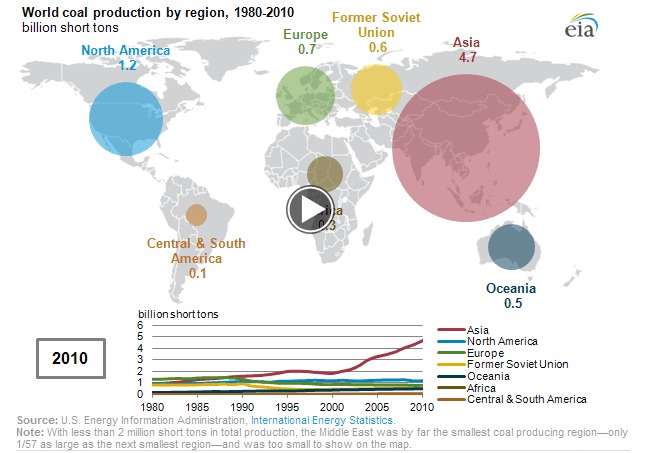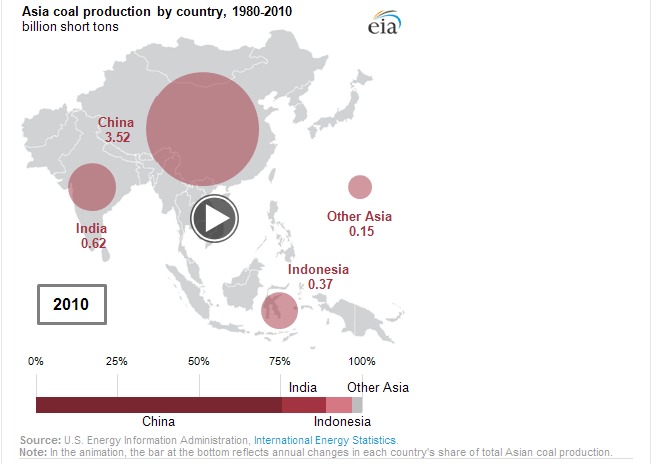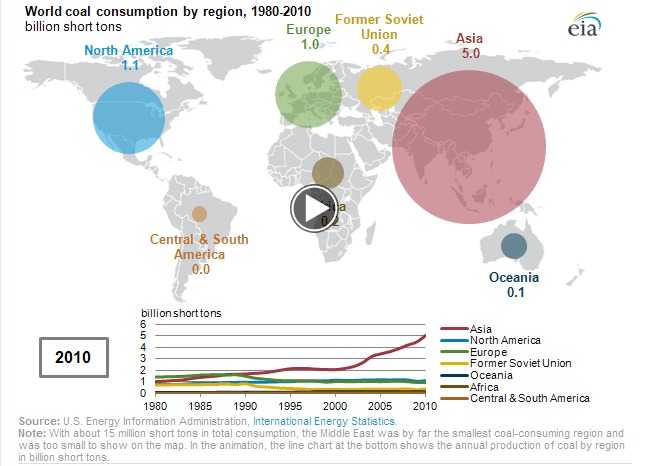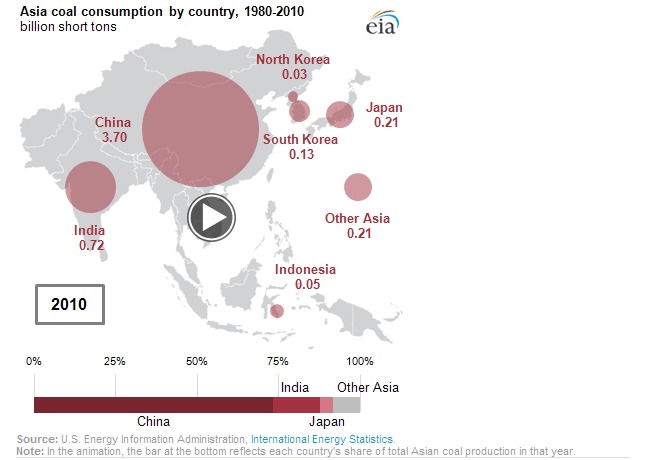Cross-posted from Sightline Daily.
In the course of looking into some larger questions about the global coal trade, I stumbled upon several fascinating pictures of world coal production and consumption during the last three decades. Here’s what global coal “production” (i.e. mining) looked like in 2010:

I wasn’t able to embed the animated image, but you can watch 30 years of coal production play out here.
Now here’s a closer look at trends within Asia, the world’s dominant coal producer:

Watch the animated version here.
That’s the production side. The other side of the coin, of course, is coal consumption. So, let’s take a look at 30 years of international coal consumption:

Animated version here.
Global coal consumption has roughly doubled since 1980, with China’s increase in coal consumption exploding fivefold in those 30 years. By contrast, coal consumption in Europe and the former Soviet Union actually declined over the period, and while North American consumption is up from 1980 levels, it’s begun a moderate decline in recent years.
Now, here’s a closer look at coal consumption in Asia, which is easily the biggest coal consuming region in the world:

Animated version here.
What are the takeaway lessons here?
It’s noteable that some of the world’s major producers, like Australia and Indonesia, actually consume very little coal relative to other countries. By contrast, other major coal producers like China and North America consume roughly the same amount that they produce.
It’s also worth contrasting the two pictures of coal in Asia. Note that several major coal consuming nations, like Japan and South Korea, produce virtually no coal.
Yet the most important lesson, I think, is that consumption trends in Asia, and particularly China, are in the driver’s seat of world coal trends. It’s not surprising that Chinese coal markets and Chinese energy policy are the subject of much attention by coal companies and public interest advocates alike.



